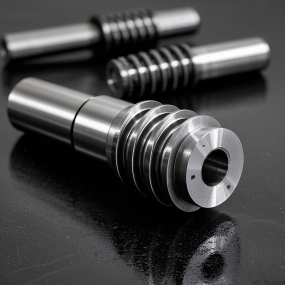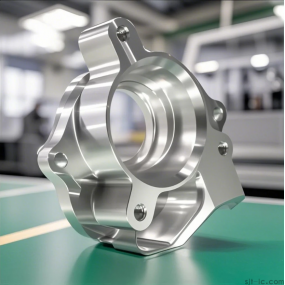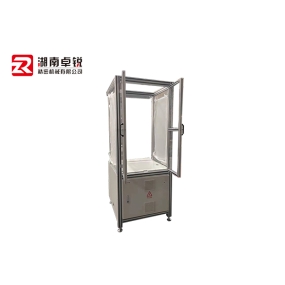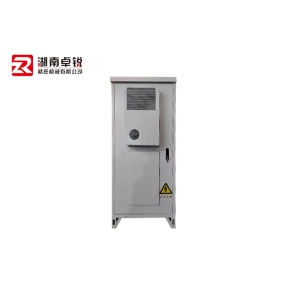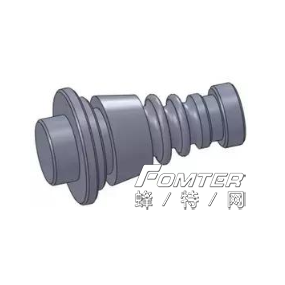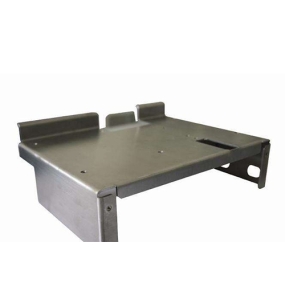The business process and current situation of the sheet metal industry
According to a definition in a foreign professional journal, sheet metal can be defined as a comprehensive cold working process for metal sheets (usually below 6mm), including cutting, punching/cutting/composite, folding, welding, riveting, splicing, forming (such as automotive body), etc. Its prominent feature is that the thickness of the same part is consistent. Generally speaking, the basic equipment of a sheet metal factory includes a shear machine, CNC punching machine/laser, plasma, waterjet cutting machine/composite machine, bending machine, and various auxiliary equipment such as an uncoiler, leveling machine, deburring machine, spot welding machine, etc.
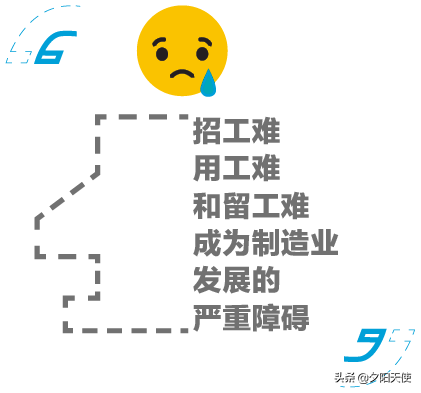
Sheet metal factory production process: The operation of departments in sheet metal factories is not much different from that of general manufacturing enterprises. Here, we only introduce the manufacturing process of products in the workshop. Usually, the three most important steps in a sheet metal factory are cutting, punching/cutting, and folding.
1. The first step is the material cutting (also known as material cutting) process. Usually, on-site workers will use a shearing machine to cut the appropriate size of part materials from large plates based on the unfolding diagram provided by the PIE department. If it is a punch press, the dead zone of the clamp must be considered. After cutting, workers will mark the part number on the surface of each piece of material with a marker pen.
Note: Some factories do not have this processing step and directly layout on standard sheets, followed by direct stamping/cutting processing.
2. Then the material will be sent to the CNC punching/cutting machine for punching/cutting processes. In this process, it is necessary to develop NC (Numerical Control) codes for the processed parts. Nowadays, most machine tool manufacturers provide automatic programming software (domestic manufacturers almost always cooperate with foreign software companies for OEM sales, so they do not have their own software development team), which greatly facilitates programming engineers. The factors that stamping/cutting programming engineers need to consider are sheet utilization, cutting tools, efficiency, accuracy, and other issues. After stamping/cutting is completed, the parts are removed from micro connections and then sent to the bending machine for bending.
3. In the bending process, the main considerations are tool selection, bending order, bending compensation, bending interference, etc. Usually, bending programming software is also sold randomly, but most CNC bending machines in China are still manually programmed, often relying too much on the experience of teachers. On the other hand, the manufacturing process requirements in China still have a certain distance compared to foreign countries, so efficiency has not been improved, and the performance of CNC bending machines has not been maximized.
Finally, depending on the product situation, welding, polishing, painting, assembly, packaging and other processes may need to be carried out, which will not be described here.
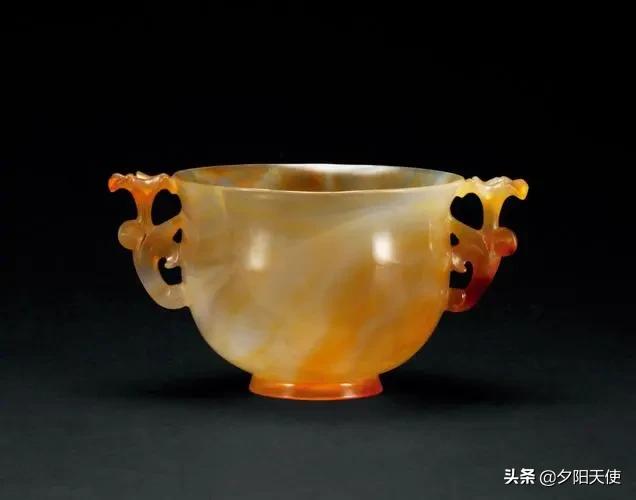
The current situation of the sheet metal industry!
1. The demand for production capacity has increased. China is gradually becoming an international manufacturing center, and with the continuous increase of foreign investment, the demand for metal processing capabilities is constantly increasing. In the metal processing industry, electrical control boxes, machine casings, and other components are generally sheet metal parts, so the demand for Sheet Metal Processing capabilities is also constantly increasing.
2. As far as sheet metal processing is concerned, precision within a few threads is quite common, and the complexity of the process is also relatively high, with some parts even reaching dozens of processes. So sheet metal processing enterprises usually need various types of mechanical equipment to meet different process requirements. The precision of sheet metal punching is generally within&# 177; About 0.1mm, the bending accuracy can generally reach&# 177; 0.5mm.
3. High profit: stamping can generally reach around 30%, while laser cutting can reach 50% or even more.
4. There are several main characteristics of the domestic sheet metal industry in summary: the equipment is not as efficient as developed countries, the accuracy is not as accurate as others, and the most important thing is that the professional skills of R&D personnel and production technicians are still in the early stage. Good technology is in the minds of teachers, and the training mechanism is still in the simple stage of machine operation training. There is no professional and sustainable industry standard yet, so it is difficult to meet the needs of high-end international customers, resulting in a situation where we cannot produce orders
1. Department Manager: Lead the technical team or project team to complete product development and development on time, with quality and quantity, as well as the production, release, and change of process technology. Arrange, inspect, and adjust project progress to meet production and customer needs, ensuring that the requirements of process documents can maximize the company's interests (including production cost control, process optimization to improve production efficiency, effective and timely standard cost management and quotation system). Assist various departments in their work, make reasonable arrangements to follow up on the work content of the technical team, and improve the work environment to encourage individual growth of the technical team.
2. Process technology engineer: responsible for the production and release of BOM material lists, alternative materials, process documents/technical specifications, and engineering changes; Technical support on the production site; Communicate process and technical issues with customers; Optimization of production processes;
3. Pricing Engineer: Establish a standard cost accounting system and update it in a timely manner based on material and market changes. Provide accurate and effective cost prices in a timely manner when bidding for new orders or sample orders
Make decisions for the "order review team" and be responsible for price confidentiality to safeguard the company's interests;
4. Mold Engineer: Review and confirm the rationality of the mold plan, track the progress of the mold, create standardized operation manuals for use, provide on-site guidance for production, and maintain the mold database;
5. CNC programmer: responsible for programming CNC programs, ensuring maximum material utilization through programming, correctly selecting materials, maintaining the database of numerical punching molds, and timely completing PMC production arrangements.
6. Draftsman: responsible for developing customer drawings, compiling process documents, and developing towards the direction of engineers;
7. Clerk: Responsible for the release management of technical documents, product coding management, document transmission between departments, data statistics, and daily administrative work of the department.
3、 IE Business Process
1. New product development (sample development):
Our company is an OEM/ODM processing type. When the sales department discusses new products with customers, they usually provide technical documents. The PIE (Process Integration Department) department arranges a project team to analyze product processes, BOMs, and other issues based on technical documents/samples. At the same time, standard costs are calculated and submitted to the MRB (Order Review Team).
After MRB decides to take on the order, the technical team begins to produce and convert customer technical documents, purchase trial materials, arrange sample development and trial production, and the process engineer follows up on the entire process from the production of process technical documents to on-site technical guidance for sample development and trial production. The project leader must participate in and follow up on the project progress, and feedback problems and progress to the PIE manager at any time. When there are process or equipment problems, timely communication and improvement should be made with the customer's technical department, and the sales department should be informed at the same time.
After passing the initial inspection of the trial production, before small-scale production, the process engineer must complete the production of all required process technical documents (BOM/process technical requirements/substitute material list/standard working hours/standard cost/standard process route/ERP data...) and release them to the controlled DCC.
During the first batch of mass production, process engineers supervise and guide frontline production personnel and supervisors on site to operate correctly. If there are deviations in the "operation process" and "standard working hours", technical documents must be corrected in a timely manner. If batch materials are found to be defective during mass production, solutions should be negotiated with the supplier. If it involves replacing materials to meet customer requirements, customer confirmation must be obtained in advance. Special material technical requirements documents should be developed for these special materials to avoid duplicate problems in future procurement and affect OTD.

After the first batch of mass production, the standard cost and standard working hours have been basically determined. These materials are provided to the finance department for cost accounting and PMC as a planning and scheduling tool, completing the process from sample opening to mass production. It is emphasized here that the responsible engineer must participate in the entire process, ensuring that frontline personnel can produce efficiently and accurately, and controlling the quality defects of the product process before the second batch of mass production.
2. Products already in mass production:
Due to the fact that the process and technical documents have already been prepared in small batches in the early stage, there is basically not much to do. However, it is important to note the confirmation and release of ECO/ECN design changes, supervise relevant departments to ensure the production of qualified products, and work with production engineers to optimize production processes and design fixtures to improve production efficiency and reduce production costs.
4、 PIE Information Management:
1. Security and confidentiality of technical documents:
The MIS department uses technical means to prevent illegal COPY, prevent illegal disclosure of technical information through online uploading/downloading, and email, and prevent hackers from illegally invading and stealing technical information through network security management; Set access and modification permissions for technical documents, and set network login passwords;
2. Copyright of design and drawing software:
With the increasing emphasis on global software copyright/intellectual property, the company uses all genuine design software;
3. Data backup:
Weekly backup data stored remotely; The daily backup data is stored in the safe; Develop emergency response plans for data disasters.
5、 The role of PIE in Sakaki Province
The importance of PIE in enterprises is unquestionable. All production and manufacturing, PMC planning, ERP systems, procurement, outsourcing, inventory, and quality work must be based on PIE's technical documents. Therefore, the accuracy and seriousness of PIE's documents are not just a joke. Once a business trip is wrong, causing batch defects or scrapping of products, the losses to the enterprise are difficult to estimate. If this affects customers
The delivery time of customer OTD has led to a decrease in customer satisfaction, and the increase or decrease in subsequent orders has caused great trouble for GM and the sales department.
Only by forming good work habits from a fundamental sense of work responsibility and attitude, and persistently improving the technical document system, can enterprises move towards success!


 Spanish
Spanish Arabic
Arabic French
French Portuguese
Portuguese Belarusian
Belarusian Japanese
Japanese Russian
Russian Malay
Malay Icelandic
Icelandic Bulgarian
Bulgarian Azerbaijani
Azerbaijani Estonian
Estonian Irish
Irish Polish
Polish Persian
Persian Boolean
Boolean Danish
Danish German
German Filipino
Filipino Finnish
Finnish Korean
Korean Dutch
Dutch Galician
Galician Catalan
Catalan Czech
Czech Croatian
Croatian Latin
Latin Latvian
Latvian Romanian
Romanian Maltese
Maltese Macedonian
Macedonian Norwegian
Norwegian Swedish
Swedish Serbian
Serbian Slovak
Slovak Slovenian
Slovenian Swahili
Swahili Thai
Thai Turkish
Turkish Welsh
Welsh Urdu
Urdu Ukrainian
Ukrainian Greek
Greek Hungarian
Hungarian Italian
Italian Yiddish
Yiddish Indonesian
Indonesian Vietnamese
Vietnamese Haitian Creole
Haitian Creole Spanish Basque
Spanish Basque

